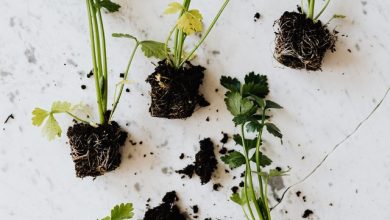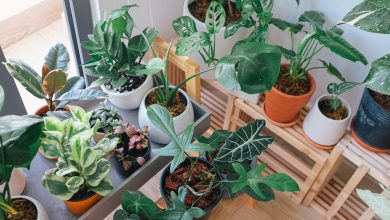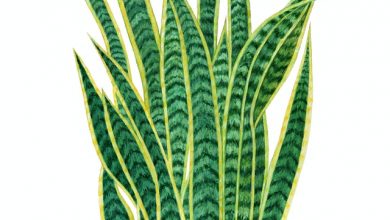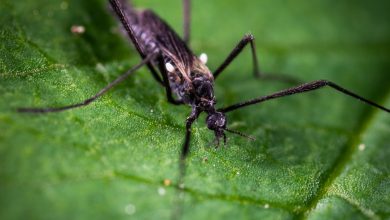The Truth About Common Garden Myths
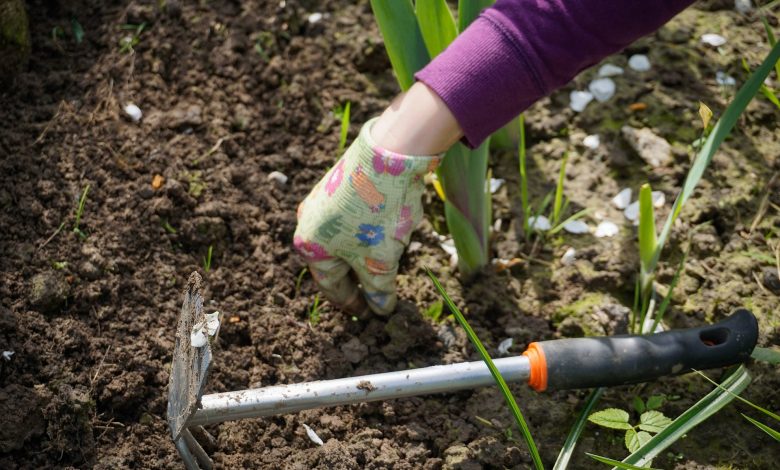
The topic of gardening is a complicated one. With so many plants and flowers to grow and so many ways to go about it, it’s not surprising that everyone has their own way of doing things. What works for one person might not work for another, and factors such as location and climate often have a hand in the differences.
However, there are some garden tips that have been shared around the world that just don’t seem to be worth their weight. Of course, we’d love to believe that these miracle-working secrets can actually do the trick, but in the end, you’re likely spending extra time of them without any real changes.
These are the common gardening myths debunked so that you might be able to implement tricks that actually work!
Natural Pesticides are Safer Than Synthetic Options
This is one of the great debates, especially as more and more gardeners are trying to make safer choices for the environment. Like many products on our shelves these days, it is so difficult to know which products are actually eco-friendly and which companies are just using the clever wording to sound greener.
The truth is that organic pesticides can still include some toxins that can be harmful to plants, pollinators, and animals. Even if they are not dangerous at first use, long-term use can cause harm and damage to clean soils.
Natural poisons, like Pyrethrum, are deemed “natural,” but they can still pose a danger to humans, pets, and garden visitors. Essentially, if there is an ingredient in your natural insecticide that you can’t pronounce, there is a good chance you don’t want it in your soil and garden.
Instead of trying to decide what pesticides are safest, we suggest going the no-pesticide route. Consider creating homemade remedies that will deter pests, and stay on top of weeding and pest removal instead of applying chemicals. “Organic chemicals” may be the easy choice, but they’re not any greener than their synthetic counterparts.
There are lots of sprays you can make with the items right in your kitchen, so consider those green ingredients instead.

You Must Stake All New Trees
The purchase of a little baby tree can be exciting, and naturally we want to take care of these precious plants as they begin to establish themselves in our gardens and yards! Some trees, depending on their type, can seem too fragile and vulnerable when they’re exposed, which might be why this next myth has come to be.
The myth that staking all new trees is a necessity is not true. Yes, your tree might have a small stump to begin with, but that doesn’t mean they need additional help! The truth is, a new tree that experiences some movement isn’t a bad thing; rather, it’s a good thing!
Trees are like humans in this way; movement helps us to stretch our muscles and become bigger and stronger. A tree that is held in one position for too long may grow taller over time, but it’s not going to grow much stronger.
By staking a new tree for too long, you’ll end up with a tall, weak tree that won’t be able to survive without that stake. That’s not what you want if you want your tree to last a long time.
The exception here is if your new tree is being planted in a very windy location, or if your tree is starting out very top-heavy. In these instances, a stake is required, but you should always remember to use a stake for as short a time as possible.
Banana Peels for Rose Growth
This garden tip does make some sense because it connects the rose plant with something that is full of a nutrient the rose needs to grow. All plants – including roses – require a high level of potassium in order to properly grow. This garden myth comes from the realization that bananas are full of potassium and can therefore pass the nutrients from their peels into the plants growing above them.
Gardeners are supposed to bury a banana peel deep in the soil, and then plant their roses above those peels. Allegedly, the banana’s potassium will grow up and into the roots of the rose helping it to grow.
However, there is something else that occurs before the banana’s potassium can make it to the roots of the flower. As soon as the banana is buried, tiny microorganisms begin to work very hard to break down the peel. In doing so, the microorganisms have to release a great deal of nitrogen from the soil. As a result, the nitrogen goes towards the banana’s breakdown, as opposed to going towards the growth of the plant.
The myth doesn’t quite work; banana peels should instead be put into the compost bin with everything else, and that nutrient-rich soil will help roses to grow their strongest.
Coffee Grounds Increase Soil Acidity
People use coffee grounds for all kinds of things around the house, including body scrubs, face masks, furniture fixes, deodorizers, natural dyes, and more.
In addition to all of these wild jobs, coffee grounds have also been used in the garden. It is a belief that the smell and texture of coffee grounds deter a lot of pests from plants and flowers, which is ideal for having a better harvest.
One common garden myth that you may have heard is that putting coffee grounds all over your soil can also help to lower the soil’s pH balance. This is based on the fact that coffee grounds are very acidic and might therefore provide extra nutrients for plants that love acidity.
But is this really true? Well, there is some truth to this garden myth! There is no denying that coffee grounds are acidic and that they can, in fact, add additional levels of acidity to the soil beneath them. However, if a gardener is adding these coffee grounds to try to encourage better plant growth, they may not get the yields they were hoping for.
That’s because, even though the coffee grounds lower the pH levels around them, the soil will still go through something similar to the banana-rose myth above. The microorganisms will start working on breaking down the coffee grounds, thereby releasing all of their nitrogen into this effort.
As a result, the plant sitting in this soil is getting less nitrogen than it requires and may experience stunted growth. This is especially true when large quantities of the grounds are added in one area instead of sprinkled around lightly.
You can use coffee grounds if you wish, but there are also acidic soils you can implement which won’t inhibit the release of nitrogen to the plant.

Fertilizer Helps Transplants Grow Faster
Fertilizers, both organic and synthetic, are made up of a range of key nutrients to promote the growth of plants. Naturally, a lot of people make the assumption that these fertilizers will help in all instances of gardening; however, that’s not exactly true.
Fertilizers do have lots of great nutrients for plants to grow, but they do their best work when they’re feeding plants that are already established. In the case of a plant that is being transplanted, using fertilizer at the base of the plant can actually harm instead of help its new growth.
A plant that is already established but being transplanted likely already has a strong, successful root system. If it is placed into a hole that is packed with fertilizer and key nutrients, the plant will have no reason to stretch out and establish itself while looking for nutrients.
The root system can actually become “lazy” in a sense, barely reaching outwards and having less success becoming firm to the ground around it.
Additionally, some fertilizers that are marketed for transplants are much more harmful than they are helpful. That’s because these fertilizers are often packed with salts that end up burning the roots they touch.
Instead of filling a hole with fertilizer, consider implementing some of the compost you’ve collected. This is a safer, more natural fertilizer that isn’t foreign to the plant. You might also add some mulch to the top layer of the soil, but be sure to leave some space around the actual stem.
Combining Clay and Sand for Better Filtration
Clay is a difficult ground layer to work with – there’s no doubt about that. It can be very tough and stubborn at first, and some gardeners with clay soil will have a learning curve to deal with when it comes to growing a successful garden.
Fortunately, there are ways that you can soften clay and make it into a beneficial soil where plants can thrive. However, there’s one approach that just doesn’t seem to work, as much as the myth says it does.
The myth is that, by adding sand to clay, gardeners are able to make the clay more breathable and livable for plants. Clay is essentially very tiny particles that are easily compacted, making it tough for roots, water, and air to travel through.
Some gardeners follow the myth that adding course sand to the clay will help to open up the airways and deter waterlogging. Unfortunately, this isn’t the case. When it comes to sand in clay, the sand particles tend to find existing spaces between the clay and wedge themselves in.
The resulting texture is more like concrete than anything else, which is basically the opposite of what gardeners want for their plants. Instead of sand, gardeners should incorporate compost into their clay.
Gardeners will need to till the compost into the top layer of the sand, and they will see fairly quick results. For those gardeners who already have an established garden, adding a top layer of compost can help as well; however, it will take a year or two for the compost to completely break into the clay.

Gravel in Pots Improves Drainage
For one reason or another, people have believed for years that putting gravel into the base of a potted plant will help to increase drainage. There’s no telling where this myth came from, but there are still people who practice this to no avail.
The strange myth stems from the use of pots that have no drainage holes. Even though some plants can survive with this kind of pot, almost all plants will fare better with a pot that has a drainage hole.
The hole is imperative to proper growth, since it allows the plant to get the water it needs without becoming waterlogged. When it’s ready to soak up more water, it can do so from the collection of water beneath it.
Without this ideal drainage system, plants are exposed to root rot, wilting, and even fungus and disease. Plants that are prone to dry climates, such as succulents and cacti, are especially prone to problems when drainage is an issue.
That being said, some people still purchase drainage hole-free pots, and insist that placing a layer of gravel in the bottom will act as a drainage system. In reality, instead of holding the water away from the plant’s roots, the gravel does the opposite!
Compact gravel only takes up space, and essentially pushes the water higher and closer to the roots. The roots end up sitting in the excess water and are at risk of becoming water-logged very quickly.
Instead of using gravel, it is suggested that gardeners use something much more robust, such as rocks or pine bark. These materials have much more space between their particles and allow for the water to actually stay away from the roots above.
Pruning Tar Helps Fight Disease
This garden myth is still believed by many people, but it should be stamped out. For quite some time now, there has been a garden product on shelves known as “pruning tar.” The product came about in order to help ease the damage that pruning does to trees and to try to deter any disease and pets from bothering with the exposed area.
The tar is usually black and thick in consistency and is applied right onto the tree where pruning has occurred. Arborists used it for many years, but they have long-since stopped, since there didn’t seem to be any proof that it was helping.
With some research, it has even been suggested that the pruning tar stops the tree from being able to heal itself naturally. If your tree needs to be pruned for whatever reason, it is important to make sure the cuts are clean and that you do them in colder seasons.
Cutting during the winter helps to avoid pests and diseases that are more active in the warmer months.
You Shouldn’t Water Drought-Tolerant Plants
This common garden myth seems false right from the get-go. If plants really could go without any watering at all, why wouldn’t more people have them? A no-water plant would be so incredibly easy to care for!
And yet, the myth that drought-tolerant plants don’t need any water still exists. The truth is, all plants need water, no matter how they react to drought. Plants that are new are especially prone to dying without water, so it’s important to check your plant’s soil every week.
Some types of succulents can survive for a very long time without being watered because of their water storage in their leaves and stems. However, even that water eventually runs out! A basic rule of thumb for drought-resistant plants is to only water them when their soil is completely dry, and to always plant them in pots with drainage holes.
By doing these two things, you ensure that you are not over-watering these plants, but giving them just enough to survive. It’s certainly a delicate balance, but once you get used to what your plant likes, it will be easy to know when to water.
If your drought-tolerant plant looks ill, do not assume it needs water. Less is always more with these plants; simply check the soil to be sure of your next steps.

Eggshells Will Prevent Slugs
This common garden tip is part true, and part myth. For quite some time, gardeners have tried to use empty eggshells to deter pests from climbing up stems and feasting on plants. It’s mostly geared towards slugs, who have a hard time getting around obstacles.
However, this is only really a beneficial approach if you’re willing to lay a great deal of eggshells in your garden. If you’re only scattering them, slugs will eventually make their way to plants they want.
If you’re okay with a thick layer of eggshells in your garden, as well as the visual of them, you can always give them a go. However, you might be better off setting up bird feeders and bird baths in the area to entice birds to feast on the slugs themselves.
The Ever-Learning Gardener
As mentioned, every garden and gardener is different. We all live in different places, work with different plants and soils, and practice our own preferred methods. While these gardening tips have been around for a while, they’re mostly myths that won’t allow you to reap benefits.
Of course, experimenting is part of the fun in gardening, and we encourage you to practice whatever works best for your beautiful space.
